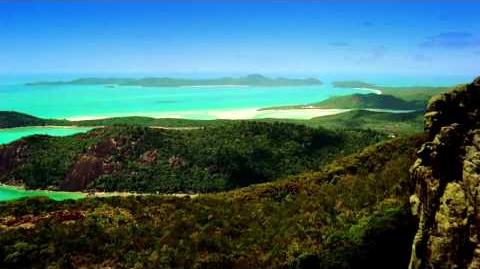In land area, Australia is estimated to be 7,692,024 square Kilometers and the sixth largest nation after Russia, Canada, China, the United States of America and Brazil. It has, however, a relatively small population. Australia is the only nation to govern an entire continent and its outlying islands. The mainland is the largest island and the smallest, flattest continent on Earth. It lies between 10° and 39° South latitude. The highest point on the mainland, Mount Kosciuszko, is only 2,228 metres. Australia is the driest inhabited continent on earth. Its interior has one of the lowest rainfalls in the world and about three-quarters of the land is arid or semi-arid. Its fertile areas are well-watered, however, and these are used very effectively to help feed the world. Sheep and cattle graze in dry country, but care must be taken with the soil. Some grazing land became desert when the long cycles that influence rainfall in Australia turned to drought.
The Australian federation consists of six States and two Territories. Most inland borders follow lines of longitude and latitude. The largest State, Western Australia, is about the same size as Western Europe.
Before the arrival of European settlers, Aboriginal and Torres Strait Islander peoples inhabited most areas of the Australian continent. Each people spoke one or more of hundreds of separate languages, with lifestyles and cultural traditions that differed according to the region in which they lived. Their complex social systems and highly developed traditions reflect a deep connection with the land and environment.
Asian and Oceanic mariners and traders were in contact with Indigenous Australians for many centuries before the European expansion into the Eastern Hemisphere. Some formed substantial relationships with communities in northern Australia.
The first recorded European contact with Australia was in March 1606, when Dutch explorer Willem Janszoon (c.1570 – 1630) charted the west coast of Cape York Peninsula, Queensland. Later that year, the Spanish explorer Luis Vaez de Torres sailed through the strait separating Australia and Papua New Guinea. Over the next two centuries, European explorers and traders continued to chart the coastline of Australia, then known as New Holland. In 1688, William Dampier became the first British explorer to land on the Australian coast. It was not until 1770 that another Englishman, Captain James Cook, aboard the Endeavour, extended a scientific voyage to the South Pacific in order to further chart the east coast of Australia and claim it for the British Crown.
Britain decided to use its new outpost as a penal colony; the First Fleet of 11 ships carried about 1500 people—half of them convicts. The fleet arrived in Sydney Harbour on 26 January 1788, and it is on this day every year that Australia Day is celebrated.
In all, about 160 000 men and women were brought to Australia as convicts from 1788 until penal transportation ended in 1868. The convicts were joined by free immigrants from the early 1790s. The wool industry and the gold rushes of the 1850s provided an impetus for free settlers to come to Australia.
Scarcity of labour, the vastness of the land and new wealth based on farming, mining and trade made Australia a land of opportunity. Yet during this period, Indigenous Australians suffered enormously. Death, illness, displacement and dispossession disrupted traditional lifestyles and practices.


